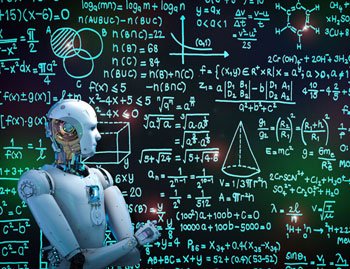
Artificial Intelligence and its Constructive Bridging Role in Education Arena
Artificial Intelligence (AI) has created hype in every arena it is being used, and with the implementation of the technology, it has created curiosity in human minds what is artificial intelligence, what powers does it possess, and what is the extent limit of its powers. It is with its hype, implementation, and advancements that we humans want to know the threshold point on which AI can replace HI (Human Intelligence). To develop an understanding of the significant advancements the technology has created it is imperative to understand what AI is?
‘Artificial Intelligence’ is the science of computer learning whereby the computer devices program themselves by imitating the way humans execute cognitive actions. The impeccable advancement of technology has made the machine to learn by themselves and develop the ability to solve complex problems using the cognitive approach learning method. The introduction of AI technology in every sphere and the industrial arena has developed the fear in humans to get replaced with the machines enabled with AI technology. The fallacy made most of the humans to argue against the use of this technology. However, one could not overlook the constructive changes that AI development technology has brought with its integration in the age of the digital world.
The century has witnessed the immaculate endowments AI technology has brought with it in many domains like healthcare, manufacturing industry, education, media, and transportation and customer services. From SIRI to self-driving cars, Artificial Intelligence has made progress rapidly. The advancement of machine intelligence has made many astonishing achievements that have created a constructively effect in the education domain.
AI can Automate Basic Activities in Education, like Grading
Teachers do struggle with managing their hectic schedules and often feel tasks related to grading consumes a lot of their time, which otherwise could be invested in the productive task like interaction with students, preparation for classes, or they can invest their time in professional development. Though Al may not be ever able to replace human grading, the results prove the ability and efficiency of the technology to land up pretty close to humans used grading methodology. The technology has automated the task of grading for nearly all kinds of multi-choice questions and fill in the blanks. Thus it has provided teachers with a schedule in which they can efficiently focus on more in-class activities and can conduct student-interaction sessions.
Software Adaptation to Student Needs
One of the key ways artificial intelligence has impacted the education arena is through the application of greater levels of individualized learning. The technology has already made custom-tailored and adaptive learning programs and software. These suites of educational learning software are designed to respond according to the students’ needs. They put greater emphasis on certain topics, repeat things that students haven’t mastered, and helped them to learn at their own pace.
AI-Enabled Software Helps To Point Out The Grey Areas:
Many times there exists a gap between the designed lecture/lesson plan and its objectives, thus leaving the students confused and ambiguous about the discussed topic. AI-enabled software helps to bridge-up this gap by targeting on the grey areas to teachers; for example, a large number of students submitted wrong answers in their assignment so the teacher will get alerts and customized message as a hint will be sent to the students. Therefore the task of building the same conceptual foundation is ensured.
Technology has made a change in the kind of interactions that take in our personal and professional lives. AI could offer students an innovative way to experiment and acquire knowledge in a relatively judgment-free environment. Artificial Intelligence is the perfect format for supporting the trial and error method of learning, as the systems itself learns by a trial-and-error process.
Thus it can be concluded that the integration of Artificial Intelligence and Machine Learning development technology is a need of the present scenario, and this collaboration of human and artificial intelligence will continue to endow constructive changes for the human race in many aspects.